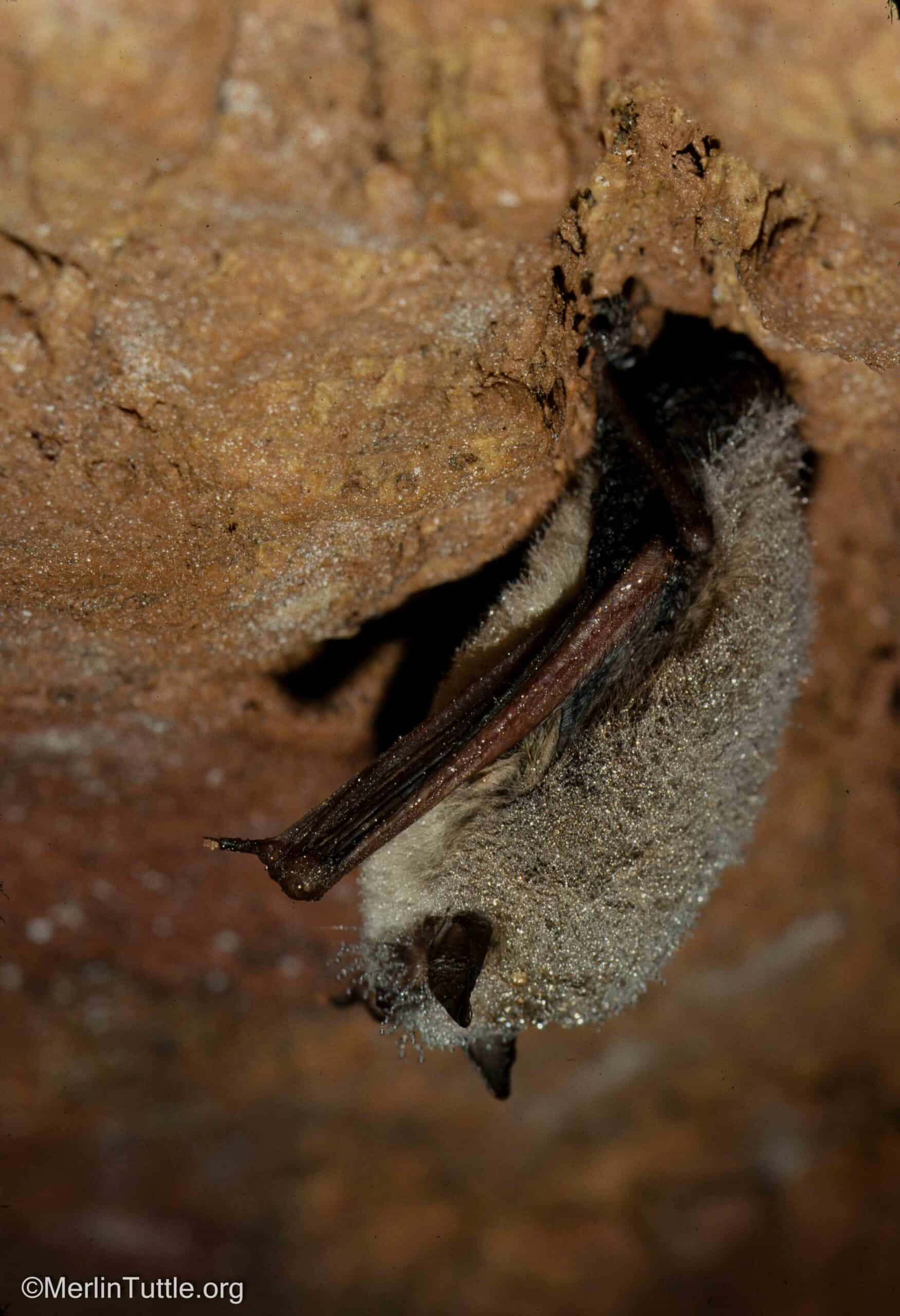Bats and Agriculture: Our 2025 Join the Nightlife Workshop
Our fourth annual Join the Nightlife workshop, held in Central Texas, brought together conservationists, researchers, and farmers from around the U.S. to explore the many
Bats are the longest-lived mammals for their size, with species like the little brown bat (Myotis lucifugus) surviving over 30 years in the wild. Even more remarkable? Despite their long lifespans and high metabolic rates, bats rarely get cancer. New research from the University of Rochester offers exciting clues as to why—revealing a powerful interplay between genetics, immune function, and cellular mechanisms that may one day reshape how we prevent and treat cancer in humans.
In most mammals, cancer risk increases with age—a trend explained by Peto’s Paradox, which posits that more cell divisions over time lead to a higher chance of harmful mutations. But bats seem to break this rule.
Several species, including M. lucifugus, Eptesicus fuscus, and Artibeus jamaicensis, appear to have evolved biological systems that delay aging and dramatically reduce cancer susceptibility.
The studies reveal that bats:

At the heart of bat cancer resistance lies the gene TP53. While humans have just one copy, M. lucifugus was found to have two full versions and multiple partial copies. This gene plays a critical role in triggering programmed cell death when a cell’s DNA is damaged.
Despite having fewer inherent barriers to cellular transformation, bat fibroblasts (cells that contribute to the formation of connective tissues) can be turned cancerous with just two tumor or cancer-causing (oncogenic) “hits,” similar to mice. Bats have evolved a hyperactive p53 system that eliminates damaged cells before they can proliferate. This combination of a low transformation threshold, but with swift cellular “cleanup” is a unique strategy among mammals.
Another key finding: bats maintain long telomeres throughout life thanks to continuously active telomerase—an enzyme most human adult tissues suppress. In humans, reactivating telomerase can promote tumor growth, but bats seem to balance the benefits of tissue regeneration with a heightened capacity to destroy wayward cells before cancer can take root.
Unlike humans, bats avoid harmful overreactions from their immune system. Specifically, they tone down the NLRP3 inflammasome and type I interferon responses, both of which are linked to chronic inflammation and age-related disease. This subdued immune response allows bats to fight off viruses and flag damaged cells for destruction without triggering long-term tissue damage—a known precursor to cancer.
Expanded families of natural killer cell receptors in bat genomes further suggest that their immune systems are always on alert but rarely overreach.
These findings aren’t just a bat biology curiosity—they could inform the next frontier of cancer and aging therapies. Researchers suggest several avenues for translating these discoveries into human medicine:
These avenues could pave the way toward a future where cancer prevention and extended healthy lifespan go hand in hand.
What bats offer isn’t a single miracle mutation—but a complex, well-balanced cellular strategy for managing risk, regeneration, and immune response. As researchers dig deeper into bat genomics and physiology, we’re discovering a compelling blueprint for living long, staying healthy, and avoiding one of humanity’s deadliest diseases.
Love our content? Support us by sharing it!
Our fourth annual Join the Nightlife workshop, held in Central Texas, brought together conservationists, researchers, and farmers from around the U.S. to explore the many
Can we afford to lose bats? A recent study by Eyal Frank of the University of Chicago reveals that the dramatic decline in U.S. bat
Bats are among the most fascinating yet misunderstood creatures in the natural world, and for many conservationists, a single experience can ignite a lifelong passion
Many bat conservationists know that Kasanka National Park in Zambia is an exceptional place for bats, but it is also the place that sparked my
2024 © Merlin Tuttle’s Bat Conservation. All rights reserved.
Daniel Hargreaves is a lifelong bat conservationist who has worked globally to facilitate progress, including co-founding Trinibats, a non-profit bat conservation organization in Trinidad. He has organized and led field workshops worldwide, including five for MTBC. Following a long and successful career in business, he now manages a network of bat reserves for the Vincent Wildlife Trust in the UK, supervising research and development of new and innovative conservation techniques. Daniel also is one of the world’s premier bat photographers.
Madelline Mathis has a degree in environmental studies from Rollins College and a passion for wildlife conservation. She is an outstanding nature photographer who has worked extensively with Merlin and other MTBC staff studying and photographing bats in Mozambique, Cuba, Costa Rica, and Texas. Following college graduation, she was employed as an environmental specialist for the Florida Department of Environmental Protection. She subsequently founded the Florida chapter of the International DarkSky Association and currently serves on the board of DarkSky Texas. She also serves on the board of Houston Wilderness and was appointed to the Austin Water Resource Community Planning Task Force.
Michael Lazari Karapetian has over twenty years of investment management experience. He has a degree in business management, is a certified NBA agent, and gained early experience as a money manager for the Bank of America where he established model portfolios for high-net-worth clients. In 2003 he founded Lazari Capital Management, Inc. and Lazari Asset Management, Inc. He is President and CIO of both and manages over a half a billion in assets. In his personal time he champions philanthropic causes. He serves on the board of Moravian College and has a strong affinity for wildlife, both funding and volunteering on behalf of endangered species.